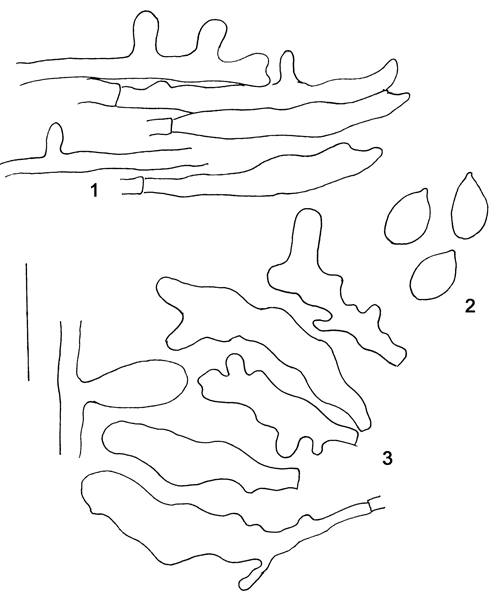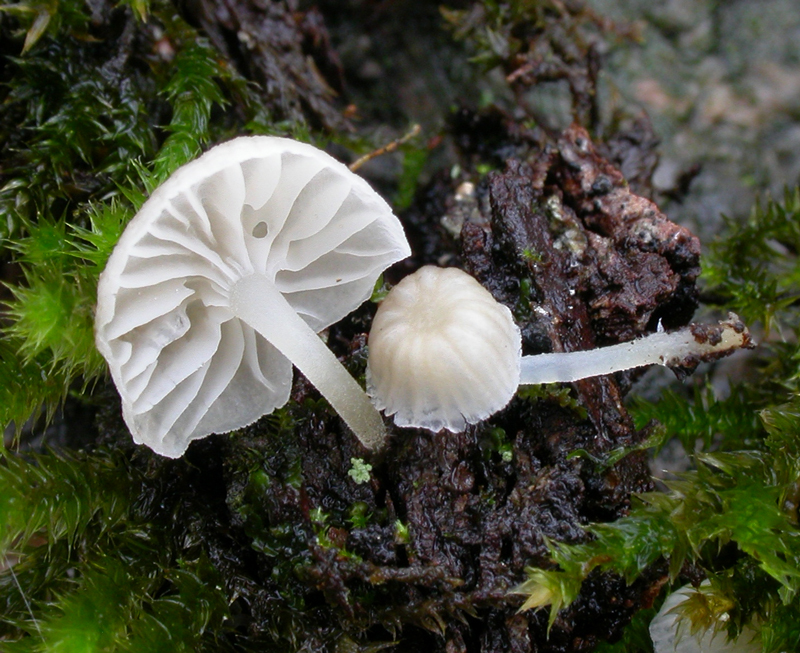Phloeomana minutula
Phloeomana minutula
Description
Cheilocystidia
Hyphae of the pileipellis, spores and caulocystidia
Cap 5-15 mm across, conical or somewhat campanulate to convex, flattening with age, occasionally with a small papilla, glabrous, hygrophanous, ±sulcate, translucent-striate, whitish to ivory, becoming more yellowish with age, especially in the centre. Gills 15-22 reaching the stem, adnexed to emarginate, sometimes decurrent with a short tooth, somewhat veined with age, and then often intervenose, anastomosing, white. Stem 15-30 x 0.5-2 mm, cylindrical, equal, firm, minutely puberulous all over, glabrescent, becoming shiny, white, turning yellowish to yellow-brown from the base with age; the base densely covered with long, coarse white fibrils. Odour not distinct. Taste mild or faintly acidulous. Basidia 22-27 x 6-7 µm, clavate, 2-spored, with sterigmata up to 8 µm long. Spores 6.5-9.5 x 4.7-6.2 µm, Q = 1.3-1.8, Qav ˜ 1.5, broadly pip-shaped, nonamyloid. Cheilocystidia 35-60 x 10-20 µm, occuring mixed with basidia, cylindrical, subclavate or fusiform, apically broadly rounded or somewhat narrowed, smooth. Pleurocystidia scattered, similar. Lamellar trama non-dextrinoid. Hyphae of the pileipellis 2.5-4.5 µm wide, smooth, sometimes with a few scattered, coarse, cylindrical excrescences, terminal cells 4-8 µm wide, sometimes with a few coarse, inflated excrescences. Hyphae of the cortical layer of the stem 2-4.5 µm wide, smooth, caulocystidia 16-48 x 5-9 µm, simple or lobed to somewhat branched, clavate or fusiform to more irregularly shaped. Clamps absent.
Ecology and distribution
Solitary to scattered or in small groups on moss-covered trunks of deciduous trees. Autumn. Rare.




